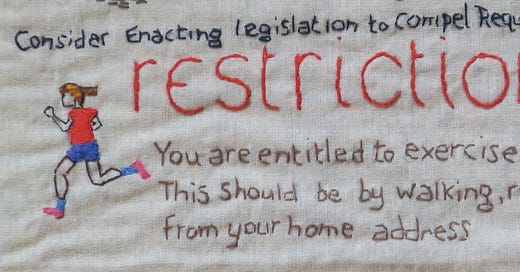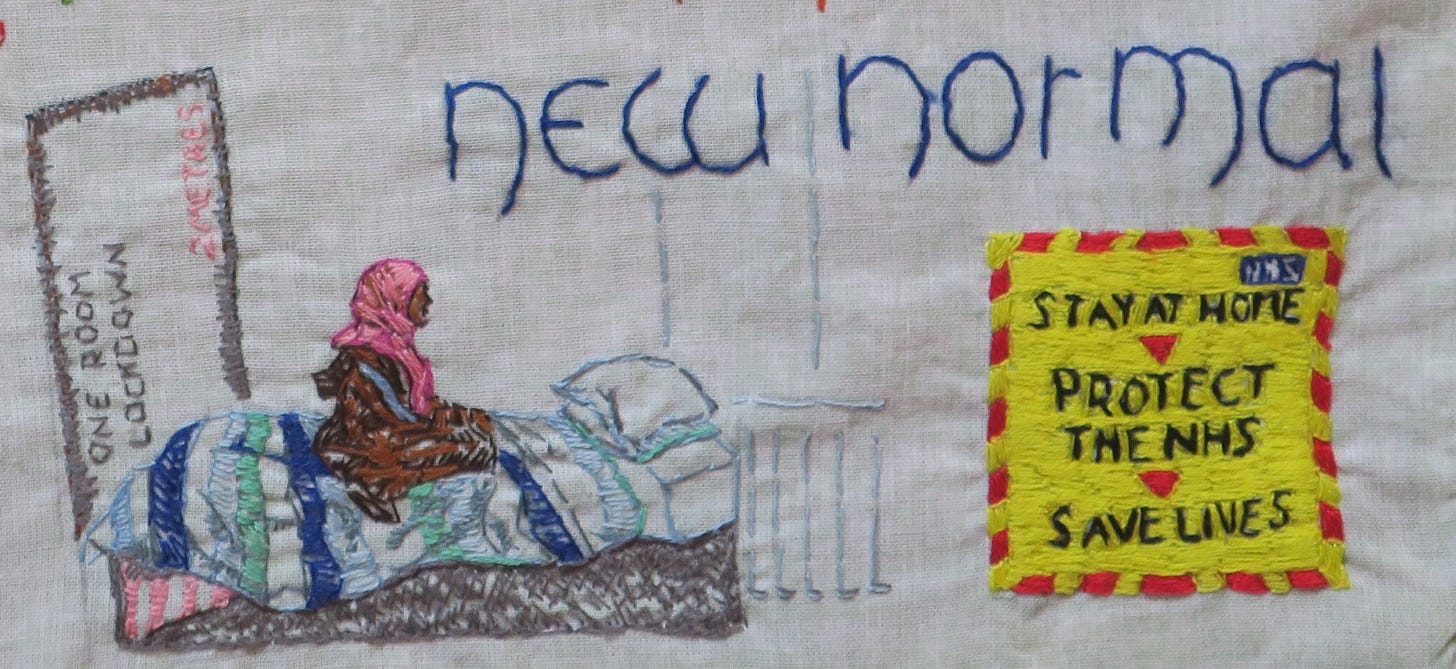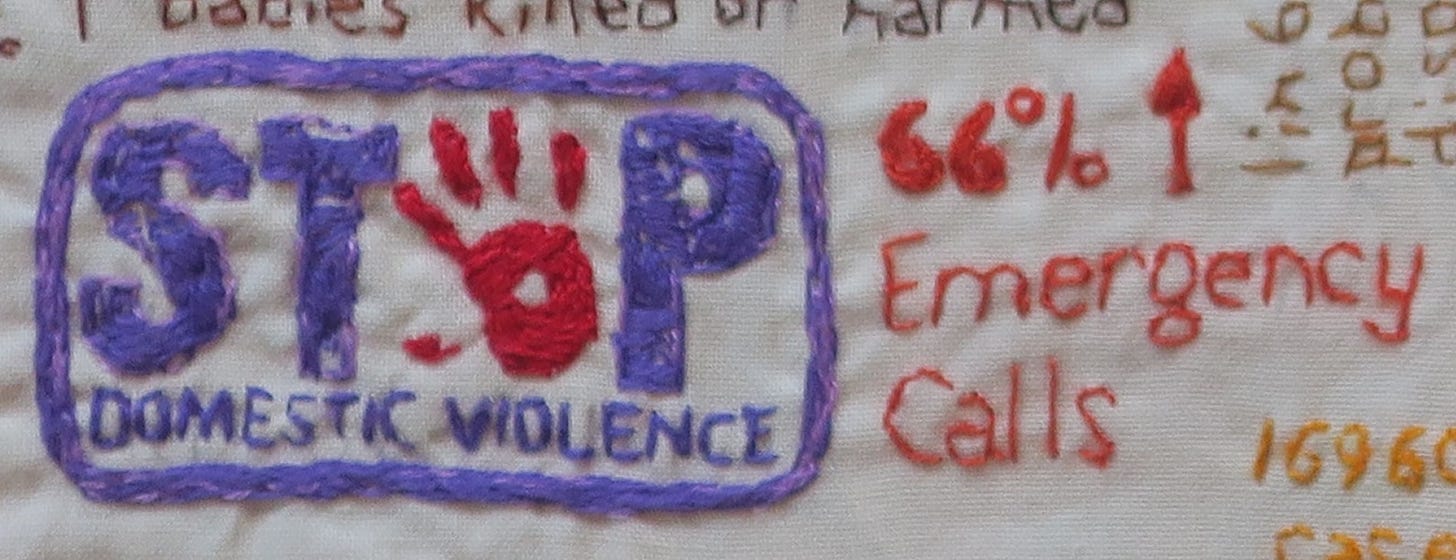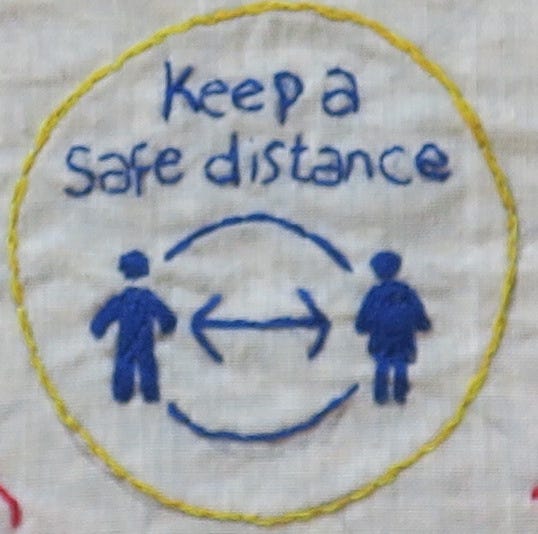Reducing inequity: Adherence to these measures is likely to be undermined by perceived inequity in their impact on different sections of the population, especially those who are already disadvantaged, e.g. those in rented accommodation and those working in precarious employment. Reducing costs of phone calls, data downloads etc. by ‘responsibility deals’ or government subsidies should be considered.
Restriction
For some vulnerable people, loneliness and a lack of social contact in places like clubs and gyms, along with the loss of their protective factors, led to depression, suicidal ideation and acts of self harm. In our surgeries, we saw new psychosis triggered by the social isolation of lockdown and anxiety about illness. We saw new OCD and germ phobia, anxiety caused by masks, anxiety about infection and fears of returning to normal life after lockdowns and furloughs ended.
The rate of antidepressant prescribing in General Practice substantially increased, whereas the number of people in contact with adult mental health services, and the number of referrals to those services, substantially decreased. Young people and women were particularly at risk.
Researchers found that older adults faced an elevated risk of poor mental health during the COVID-19 pandemic. In-person interactions with friends, family, and health care providers were associated with fewer mental health concerns, whereas interactions using digital technologies, including emails and video calls, were associated with feelings of depression and anxiety about COVID-19. They concluded, “Unfortunately, necessary public health measures to reduce risk of COVID-19 may have exacerbated the risk for loneliness and mental health concerns among these individuals.”
Age UK representatives told the UK Covid Inquiry that lockdowns led to much higher rates of suicide and depression in older people, with many elderly people afraid to leave their homes or take public transport, more than two years after restrictions ended. Physical deconditioning through lockdowns led to a cohort of older adults ‘leading much more constrained lives’ than before the pandemic.
People who exercised more during lockdowns experienced less anxiety and depression than those who did not exercise, and those who spent more time outdoors had lower levels of anxiety and depression than those who stayed inside. Low cardiorespiratory fitness and muscle strength have a significant association with worse mental health.
Before the pandemic, around two-thirds of children were doing the government's recommended 60 minutes of activity every day, but during the lockdown period, activity levels decreased, with 44% of children either doing no activity or less than half an hour each day. This in spite of the efforts of Joe Wicks, the fitness coach who became a household name for the free daily workouts he live-streamed during the coronavirus lockdown, as a way of encouraging children and their parents to exercise at home without expensive equipment. Wicks describes being inundated with messages from fans experiencing mental health issues during lockdown.
The main determinants of children’s physical activity during the pandemic were age, gender, socioeconomic background, and the outdoor environment. A scoping review which looked at physical activity of children and adolescents, showed a decrease in physical activity during the pandemic, ranging between −10.8 min/day and −91 min/day. In the face of this evidence, a group of cross-party MPs and scientists backed a campaign to make youth outdoor sport exempt from lockdown restrictions, which remained in place in 2021.
Though some people were able to adapt to enjoying exercise without access to gyms, and a privileged minority even bought home Pelotons, for others the closure of leisure facilities proved unavoidably stressful. The impact of a person’s living environment on their lockdown experience and the claustrophobia of lockdown in cramped, overcrowded housing, was captured by journalist and photographer Laura Dodsworth in her piece ‘2 metres’. It doesn’t take much imagination to realise that playgrounds and gyms can feel like a lifeline for people in urban areas of socioeconomic deprivation.
Regular gym-goers struggled with the closure of gyms during the pandemic, and petitioned for fitness centres to be considered ‘essential services’ due to their positive health benefits. In one women-only gym, the owner described the extra health and social benefits of gym attendance,
‘Some of these women come from really bad homes, it is a place where they can talk and help one another, and rebuild their confidence’.
Campaigners warned that gym and leisure centre closures posed a ‘major threat’ to nation’s physical and mental health. Some gym owners defiantly resisted orders to close their doors in the second lockdown, citing their determination to protect their members from suicide. One gym owner who stood accused of lockdown breach defended his position,
‘People were ringing me with suicidal intentions and I wasn't going to let that happen again. These people were isolated and on their own. The human interaction was all that they needed.’
Gyms and leisure centres were some of the last businesses to open after the initial lockdown. Despite concerns about gyms being potential ‘superspreader’ venues, published data showed that for every 100,000 visits to UK gyms and leisure centres during 2020, only 1.7 people went on to test positive for Covid-19. Another study showed an average infection rate at gyms and health clubs across Europe of just 0.78 per 100.000 visits. This makes intuitive sense, given that even in the prodrome of a viral illness, most of us eschew exercise.
Prisons of Fear
Predictably, a 2023 study found that even three years on from the first coronavirus lockdown, people who stuck by Covid lockdown rules the most strictly had the worst mental health and were most likely to be suffering from stress, anxiety and depression. Some would become imprisoned by their own fear, with one immunocompromised woman describing her ‘despair, desolation and great depression’ after taking extreme measures to ‘shield’ from Covid-19 for nearly 4 years: her husband had lived in a different room to her since the start of the pandemic; they ate meals alone and communicated with each other over Zoom.
As 2023 drew to a close, social medial influencer Dr Deepti Gurdasani, formerly one of Independent SAGE’s most vocal Zero Covid champions, continued to maintain strict household purification rituals for her family. This included subjecting her healthy child to continual respirator use, only to be taken off outdoors when eating:
The very statement, ‘we *never* remove the respirator indoors’, provokes a horrible suspicion that this physical intrusion may be required to continue even in sleep. Frankly, it would be a wonder if any child subjected to such procedures could avoid inheriting significant associated neuroses.















Dr Deepti Gurdasani,should be reported for child abuse and fitness to practice to the GMC